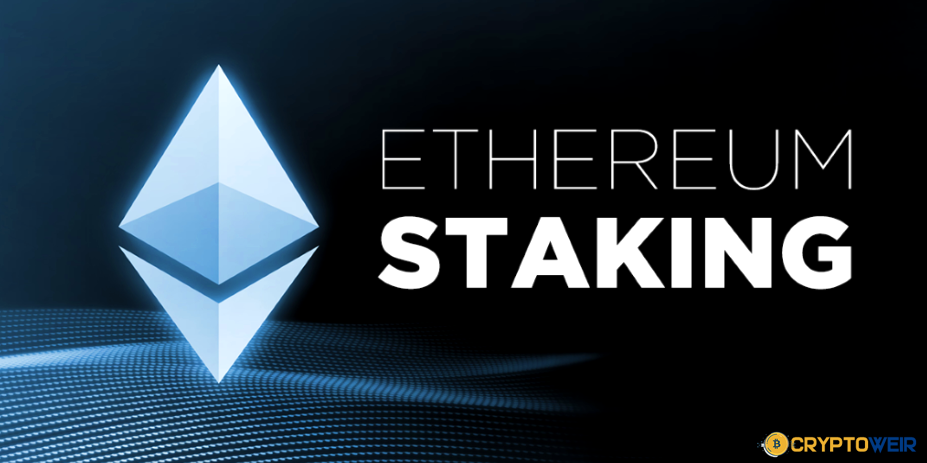Top 5 Enterprise Ethereum Blockchain Solutions That Work
Enterprise Ethereum blockchain solutions for business. Complete guide to implementation, benefits, costs & top platforms in 2025.

The demand for enterprise Ethereum blockchain solutions has reached unprecedented levels as businesses worldwide recognize the transformative potential of decentralized technology. From Fortune 500 companies to emerging startups, organizations are leveraging Ethereum’s robust infrastructure to revolutionize their operations, enhance security, and create new revenue streams. Enterprise Ethereum blockchain solutions offer businesses the ability to streamline processes, reduce costs, eliminate intermediaries, and build trust with customers through transparent, immutable ledger systems. Unlike traditional centralized systems, Ethereum provides a decentralized platform that enables smart contracts, decentralized applications (dApps), and automated business processes that operate 24/7 without human intervention.
As we enter 2025, the enterprise blockchain market is projected to reach $67 billion, with Ethereum maintaining its position as the leading platform for business applications. This comprehensive guide explores everything you need to know about implementing enterprise Ethereum blockchain solutions, from understanding the technology to selecting the right development partner and measuring return on investment.
What Are Enterprise Ethereum Blockchain Solutions?
Enterprise Ethereum blockchain solutions represent a sophisticated approach to implementing Ethereum’s decentralized technology within corporate environments. These solutions leverage the Ethereum network’s smart contract capabilities, security features, and interoperability to address specific business challenges while maintaining the scalability and compliance requirements that enterprises demand. The core advantage of enterprise Ethereum implementations lies in their ability to create trustless systems where multiple parties can interact and transact without requiring a central authority. This fundamental shift from traditional business models enables organizations to reduce operational costs, increase transparency, and accelerate transaction processing times.
Modern enterprise Ethereum solutions typically incorporate Layer 2 scaling technologies, private consortium networks, and hybrid blockchain architectures that combine the security of public Ethereum with the control and privacy requirements of enterprise operations. These implementations often integrate with existing enterprise resource planning (ERP) systems, customer relationship management (CRM) platforms, and other business-critical applications.
Key Components of Enterprise Ethereum Solutions
Smart Contract Infrastructure: Automated business logic that executes predetermined agreements without manual intervention, reducing processing time from days to minutes while eliminating human error and bias.
Decentralized Identity Management: Secure, verifiable identity systems that give users control over their data while enabling businesses to verify credentials without storing sensitive information.
Supply Chain Transparency: End-to-end tracking capabilities that provide real-time visibility into product movement, authenticity verification, and compliance monitoring across complex supply networks.
Digital Asset Management: Creation, management, and transfer of tokenized assets including cryptocurrencies, non-fungible tokens (NFTs), and utility tokens that represent real-world value or access rights.
Why Businesses Choose Ethereum for Enterprise Solutions
The selection of Ethereum as the foundation for enterprise blockchain initiatives stems from several compelling advantages that distinguish it from other blockchain platforms. Understanding these benefits is crucial for organizations evaluating their blockchain strategy and technology stack decisions.
Ethereum’s mature ecosystem provides enterprises with access to the largest developer community in blockchain, extensive documentation, proven security through years of operation, and the broadest range of tools and frameworks available. This ecosystem maturity translates into lower development costs, faster time-to-market, and reduced technical risks compared to newer blockchain platforms.
The platform’s programmability through smart contracts enables businesses to automate complex processes that previously required multiple intermediaries, manual verification steps, and extensive paperwork. Organizations implementing Ethereum-based solutions typically report 40-60% reductions in processing times and 25-35% decreases in operational costs within the first year of deployment.
Network Effects and Interoperability: Ethereum’s position as the leading smart contract platform means that enterprise solutions built on Ethereum can easily integrate with thousands of existing protocols, applications, and services. This interoperability creates powerful network effects where the value of an enterprise’s blockchain implementation increases as more partners, suppliers, and customers adopt compatible systems.
Regulatory Clarity and Compliance: The Ethereum ecosystem has developed sophisticated compliance tools and frameworks that help enterprises meet regulatory requirements in various jurisdictions. Many regulatory bodies worldwide have established clearer guidelines for Ethereum-based applications compared to other blockchain platforms.
Future-Proof Technology Stack: Ethereum’s ongoing development roadmap, including the transition to Proof of Stake and Layer 2 scaling solutions, ensures that enterprise investments in Ethereum technology will remain relevant and valuable as the platform continues to evolve.
Top Enterprise Ethereum Blockchain Solutions
Ethereum Enterprise Alliance (EEA) Certified Platforms
ConsenSys Quorum: Originally developed by JPMorgan and now maintained by ConsenSys, Quorum provides enterprise-grade privacy and performance through permissioned networks that can process thousands of transactions per second while maintaining compatibility with public Ethereum.
Hyperledger Besu: An open-source Ethereum client designed for enterprise use that supports both public and private network deployments, offering advanced privacy features and integration capabilities with existing enterprise infrastructure.
Microsoft Azure Blockchain Service: A fully managed blockchain service that simplifies the deployment and management of Ethereum networks, providing enterprise-grade security, monitoring, and governance tools through Microsoft’s cloud infrastructure.
Industry-Specific Solutions
Supply Chain Management: Platforms like VeChain Thor and OriginTrail provide specialized Ethereum-compatible solutions for supply chain transparency, product authentication, and logistics optimization that integrate seamlessly with existing enterprise resource planning systems.
Financial Services: Enterprise DeFi platforms such as Compound Treasury and Aave Pro offer institutional-grade decentralized finance solutions with enhanced compliance features, risk management tools, and integration capabilities for traditional financial institutions.
Healthcare and Life Sciences: Solutions like MedRec and Solve. Care leverages Ethereum’s security and privacy features to create patient data management systems, drug traceability platforms, and clinical trial management tools that comply with HIPAA and other healthcare regulations.
Real Estate and Asset Management: Platforms such as RealT and Propy enable tokenization of real estate assets, automated property management through smart contracts, and fractional ownership models that increase liquidity and accessibility in traditional real estate markets.
Also, More: After returning to $1,050 in October, the price of Ethereum can increase.
Implementation Process for Enterprise Ethereum Solutions
Successfully implementing enterprise Ethereum blockchain solutions requires a structured approach that addresses technical, business, and organizational challenges while ensuring alignment with strategic objectives and compliance requirements. The implementation process typically spans 6-18 months, depending on solution complexity and organizational readiness.
Phase 1: Strategic Assessment and Planning
The initial phase involves conducting a comprehensive assessment of business requirements, existing infrastructure, and organizational readiness for blockchain adoption. This assessment should identify specific use cases where blockchain technology provides clear advantages over traditional solutions, quantify potential benefits and costs, and establish success metrics for the implementation.
Organizations must evaluate their current technology stack, data architecture, and integration requirements to ensure seamless connectivity between blockchain solutions and existing systems. This evaluation often reveals the need for middleware solutions, API gateways, and data transformation tools that facilitate communication between blockchain and legacy systems.
Stakeholder Alignment: Successful implementations require buy-in from technical teams, business units, compliance officers, and executive leadership. Creating cross-functional project teams and establishing clear communication channels ensures that all stakeholders understand the benefits, risks, and expectations associated with the blockchain initiative.
Regulatory and Compliance Review: Enterprises must assess regulatory requirements in their operating jurisdictions and ensure that proposed blockchain solutions comply with relevant laws and industry standards. This review should address data privacy, financial regulations, industry-specific compliance requirements, and cross-border data transfer restrictions.
Technology Selection and Architecture Design
The second phase focuses on selecting appropriate Ethereum solutions, designing system architecture, and establishing technical specifications for the implementation. This phase requires careful evaluation of performance requirements, security needs, integration complexity, and long-term scalability considerations.
Platform Selection Criteria: Organizations should evaluate potential platforms based on transaction throughput, latency requirements, privacy features, consensus mechanisms, development tools, community support, and total cost of ownership. The selected platform should align with business requirements while providing flexibility for future expansion and modification.
Architecture Design: Successful enterprise Ethereum implementations typically employ hybrid architectures that combine public Ethereum infrastructure with private or consortium networks. This approach enables organizations to benefit from public network security and interoperability while maintaining control over sensitive data and business processes.
Integration Planning: Detailed integration planning addresses how blockchain solutions will connect with existing enterprise systems, including ERP platforms, CRM systems, databases, and third-party applications. This planning should account for data synchronization requirements, real-time processing needs, and backup and recovery procedures.
Development and Testing
The development phase involves building smart contracts, developing user interfaces, creating integration components, and conducting comprehensive testing to ensure solution reliability and security. This phase typically represents the longest portion of the implementation timeline and requires specialized blockchain development expertise.
Smart Contract Development: Enterprise smart contracts require careful design to handle complex business logic while maintaining security, efficiency, and upgradability. Development teams must implement robust error handling, access controls, and audit mechanisms to ensure contracts operate as intended under various conditions.
Security Auditing: All smart contracts and integration components should undergo thorough security audits by qualified blockchain security firms. These audits identify potential vulnerabilities, verify business logic implementation, and ensure compliance with security best practices and industry standards.
Performance Testing: Comprehensive performance testing validates that the solution can handle expected transaction volumes, user loads, and data processing requirements. This testing should include stress testing, load testing, and failover testing to ensure system reliability under various operating conditions.
Deployment and Go-Live
The final implementation phase involves deploying the solution to production environments, training users, establishing monitoring and support procedures, and executing the transition from existing systems. This phase requires careful coordination to minimize business disruption while ensuring successful adoption.
Phased Rollout Strategy: Most successful enterprise implementations employ phased rollout strategies that gradually introduce blockchain functionality while maintaining existing system operations. This approach allows organizations to validate system performance, train users incrementally, and address any issues before full deployment.
User Training and Change Management: Comprehensive user training programs ensure that employees understand how to interact with blockchain solutions effectively. Change management initiatives should address workflow modifications, new procedures, and the benefits that blockchain implementation brings to daily operations.
Monitoring and Support: Establishing robust monitoring and support systems ensures that blockchain solutions operate reliably and that any issues are quickly identified and resolved. These systems should monitor transaction processing, system performance, security events, and user adoption metrics.
Benefits of Enterprise Ethereum Blockchain Solutions
Operational Efficiency and Cost Reduction
Enterprise Ethereum solutions typically generate significant operational improvements by automating manual processes, eliminating intermediaries, and reducing transaction processing times. Organizations implementing blockchain solutions commonly report 30-50% reductions in process completion times and 20-40% decreases in operational costs within the first 18 months of deployment.
Process Automation: Smart contracts enable automated execution of complex business processes that previously required manual intervention, approval workflows, and multiple system interactions. This automation reduces processing time from days or weeks to minutes or hours while eliminating human error and ensuring consistent process execution.
Intermediary Elimination: Blockchain technology enables direct peer-to-peer transactions and interactions, reducing or eliminating the need for intermediaries such as banks, brokers, clearinghouses, and verification services. This disintermediation can result in substantial cost savings and faster transaction settlement.
Reduced Reconciliation Costs: Shared ledger technology ensures that all parties have access to the same transaction data, dramatically reducing the time and cost associated with reconciling records between different organizations and systems.
Enhanced Security and Trust
Ethereum’s cryptographic security features and decentralized architecture provide enterprises with enhanced security capabilities that exceed traditional centralized systems. The immutable nature of blockchain records creates audit trails that cannot be altered retroactively, providing superior accountability and compliance capabilities.
Cryptographic Security: All transactions and data stored on Ethereum networks are protected by advanced cryptographic algorithms that make unauthorized access or modification practically impossible. This security level exceeds most traditional database and file storage systems.
Decentralized Risk Distribution: Unlike centralized systems that create single points of failure, Ethereum’s decentralized architecture distributes risk across multiple nodes, making the system more resilient to attacks, hardware failures, and other disruptions.
Transparent Audit Trails: Every transaction on Ethereum networks creates permanent, timestamped records that provide complete transparency into system activities. These audit trails simplify compliance reporting and regulatory examinations while deterring fraudulent activities.
Improved Transparency and Traceability
Enterprise Ethereum solutions provide unprecedented visibility into business processes, supply chains, and financial transactions. This transparency enables better decision-making, improved customer trust, and enhanced regulatory compliance.
Supply Chain Visibility: Blockchain-based supply chain solutions provide end-to-end visibility into product movement, manufacturing processes, and quality certifications. This visibility enables rapid identification of issues, improved quality control, and enhanced customer confidence in product authenticity.
Financial Transparency: Blockchain-based financial systems provide real-time visibility into payment processing, account balances, and transaction histories. This transparency improves cash flow management, reduces payment disputes, and enhances financial reporting accuracy.
Compliance and Reporting: Automated compliance monitoring through smart contracts ensures continuous adherence to regulatory requirements while generating real-time compliance reports that simplify regulatory examinations and reduce compliance costs.
Challenges and Solutions in Enterprise Ethereum Implementation
While enterprise Ethereum blockchain solutions offer substantial benefits, organizations must address several challenges to ensure successful implementation and adoption. Understanding these challenges and their solutions enables better planning and risk mitigation throughout the implementation process.
Scalability and Performance Considerations
One of the primary challenges facing enterprise Ethereum implementations is achieving the transaction throughput and processing speed required for high-volume business applications. Public Ethereum currently processes approximately 15 transactions per second, which may be insufficient for enterprises processing thousands or millions of transactions daily.
Layer 2 Scaling Solutions: Modern enterprise Ethereum implementations leverage Layer 2 scaling technologies such as Optimistic Rollups, zk-Rollups, and state channels to achieve transaction throughput of thousands or tens of thousands of transactions per second while maintaining security and decentralization benefits.
Private and Consortium Networks: Many enterprises deploy private or consortium Ethereum networks that provide higher transaction throughput by limiting the number of participating nodes and implementing more efficient consensus mechanisms. These networks can process hundreds or thousands of transactions per second while maintaining compatibility with public Ethereum.
Hybrid Architecture Approaches: Sophisticated enterprise implementations combine public and private blockchain components, processing high-volume routine transactions on private networks while using public Ethereum for final settlement, asset transfers, or interactions with external parties.
Integration with Legacy Systems
Most enterprises operate complex IT environments with legacy systems, databases, and applications that must continue functioning during and after blockchain implementation. Achieving seamless integration between blockchain solutions and existing systems requires careful planning and specialized integration tools.
API Gateway Solutions: Enterprise-grade API gateways provide secure, scalable connections between blockchain networks and legacy systems, enabling real-time data synchronization, transaction processing, and system monitoring while maintaining existing security and access control policies.
Middleware and Integration Platforms: Specialized blockchain integration platforms such as Chainlink, Band Protocol, and enterprise middleware solutions provide pre-built connectors and transformation tools that simplify integration between blockchain and traditional systems.
Data Synchronization Strategies: Successful integrations implement robust data synchronization strategies that ensure consistency between blockchain and legacy systems while handling network outages, processing delays, and data conflicts that may occur during normal operations.
Regulatory and Compliance Challenges
Enterprises operating in regulated industries must ensure that blockchain implementations comply with relevant laws, regulations, and industry standards. The evolving regulatory landscape for blockchain technology creates uncertainty and complexity that organizations must navigate carefully.
Compliance Framework Development: Leading enterprises develop comprehensive compliance frameworks that address data privacy regulations (such as GDPR), financial services regulations, industry-specific requirements, and cross-border data transfer restrictions.
Regulatory Engagement: Proactive engagement with regulators and industry associations helps enterprises stay informed about evolving requirements while contributing to the development of blockchain-friendly regulatory frameworks.
Privacy and Data Protection: Enterprise Ethereum solutions must implement appropriate privacy controls to protect sensitive data while maintaining the transparency and auditability benefits of blockchain technology. This balance often requires sophisticated privacy-preserving technologies and careful data architecture design.
Cost Analysis and ROI of Enterprise Ethereum Solutions
Understanding the costs and potential return on investment (ROI) associated with enterprise Ethereum blockchain solutions is crucial for making informed implementation decisions and securing organizational support. The total cost of ownership for enterprise blockchain solutions varies significantly based on solution complexity, scale, integration requirements, and organizational factors.
Initial Implementation Costs
The upfront costs of implementing enterprise Ethereum solutions typically range from $100,000 to $5 million, depending on solution scope, complexity, and organizational requirements. These costs include platform licensing, development services, integration work, security auditing, and organizational change management.
Development and Customization: Custom smart contract development and application building typically represent 40-60% of initial implementation costs. Organizations can reduce these costs by leveraging existing frameworks, templates, and pre-built components while still achieving desired customization levels.
Infrastructure and Platform Costs: Cloud-based Ethereum solutions typically cost $5,000-$50,000 monthl,y depending on transaction volume, storage requirements, and performance specifications. On-premises implementations may require higher upfront infrastructure investments but can provide lower long-term operating costs.
Integration and Migration: Connecting blockchain solutions with existing enterprise systems typically requires 20-40% of the total implementation budget. Complex integrations involving multiple legacy systems, data transformation requirements, or real-time synchronization needs may require additional investment.
Training and Change Management: User training, change management, and organizational adoption initiatives typically represent 10-20% of implementation costs but are crucial for achieving successful adoption and realizing projected benefits.
Ongoing Operational Costs
Operational costs for enterprise Ethereum solutions include platform fees, transaction costs, maintenance, support, and ongoing development. These costs typically range from $10,000 to $200,000 monthly, depending on solution scale and complexity.
Transaction and Gas Fees: Ethereum transaction costs vary based on network congestion and transaction complexity. Enterprise solutions using Layer 2 scaling or private networks typically achieve much lower per-transaction costs than public Ethereum implementations.
Platform and Infrastructure: Ongoing platform fees, cloud computing costs, and infrastructure maintenance represent predictable monthly expenses that can be accurately budgeted and scaled based on usage patterns.
Support and Maintenance: Professional support services, security monitoring, platform updates, and bug fixes typically cost 15-25% of initial implementation costs annually.
Return on Investment Calculations
Most enterprises implementing Ethereum blockchain solutions achieve positive ROI within 12-36 months through operational cost savings, process improvements, and new revenue opportunities. Calculating accurate ROI requires careful measurement of both quantitative benefits (cost savings, efficiency gains) and qualitative benefits (improved customer satisfaction, enhanced security).
Direct Cost Savings: Process automation, intermediary elimination, and operational efficiency improvements typically generate 20-50% cost reductions in targeted business processes. These savings can be measured and attributed directly to blockchain implementation.
Indirect Benefits: Enhanced security, improved compliance, better decision-making through increased transparency, and improved customer trust create value that may be more difficult to quantify but contributes significantly to overall ROI.
New Revenue Opportunities: Many enterprises discover new revenue streams enabled by blockchain technology, such as tokenization of assets, new service offerings, or improved customer experiences that command premium pricing.
Future Trends in Enterprise Ethereum Solutions
The enterprise Ethereum landscape continues evolving rapidly, with emerging trends and technologies promising to expand capabilities, reduce costs, and enable new use cases. Understanding these trends helps organizations make strategic decisions about blockchain investments and platform selection.
Ethereum 2.0 and Layer 2 Scaling Impact
The ongoing transition to Ethereum 2.0 (now called “The Merge” and subsequent upgrades) and the proliferation of Layer 2 scaling solutions are fundamentally changing the enterprise blockchain landscape by dramatically improving scalability, reducing costs, and enhancing sustainability.
Proof of Stake Benefits: The transition from Proof of Work to Proof of Stake reduces Ethereum’s energy consumption by over 99%, addressing sustainability concerns that previously limited enterprise adoption. This change also improves transaction finality times and network security.
Layer 2 Ecosystem Growth: Layer 2 solutions such as Arbitrum, Optimism, and Polygon are achieving mainstream adoption, providing enterprises with high-performance alternatives that maintain compatibility with Ethereum while offering significantly lower costs and higher throughput.
Sharding Implementation: Future sharding implementations will further increase Ethereum’s transaction capacity while maintaining decentralization and security, enabling enterprise applications that require massive scalability without compromising on network effects.
Integration with Emerging Technologies
Enterprise Ethereum solutions are increasingly integrating with other emerging technologies to create comprehensive platforms that address complex business challenges and enable new capabilities.
Artificial Intelligence Integration: AI-powered smart contracts and automated decision-making systems are enabling more sophisticated business logic and adaptive processes that can respond to changing conditions without human intervention.
Internet of Things (IoT) Connectivity: Blockchain-IoT integrations enable secure, automated interactions between connected devices, creating new possibilities for supply chain management, asset tracking, and automated service delivery.
Central Bank Digital Currencies (CBDCs): The development of CBDCs built on Ethereum-compatible infrastructure is creating new opportunities for enterprise payment systems, cross-border transactions, and regulatory-compliant digital finance solutions.
Industry-Specific Evolution
Different industries are developing specialized Ethereum-based solutions that address sector-specific requirements and regulatory frameworks while leveraging the broader Ethereum ecosystem’s benefits.
Healthcare and Life Sciences: Advanced patient data management systems, drug supply chain transparency, and clinical trial management platforms are becoming more sophisticated and widely adopted as regulatory frameworks mature.
Financial Services: The convergence of traditional finance (TradFi) and decentralized finance (DeFi) is creating new hybrid solutions that combine regulatory compliance with innovative financial products and services.
Supply Chain and Manufacturing: Integration of blockchain with IoT sensors, AI analytics, and robotics is creating end-to-end automated supply chain management systems that provide real-time visibility and automatic optimization.
Conclusion
Enterprise Ethereum blockchain solutions represent a transformative opportunity for organizations seeking to modernize their operations, reduce costs, and create new value propositions in an increasingly digital economy. As we’ve explored throughout this comprehensive guide, the benefits of implementing these solutions extend far beyond simple cost savings to encompass enhanced security, improved transparency, process automation, and the creation of entirely new business models.
The maturity of the Ethereum ecosystem, combined with the availability of enterprise-grade platforms, Layer 2 scaling solutions, and comprehensive development tools, means that organizations can now implement blockchain solutions with confidence in their reliability, security, and scalability. The challenges that previously limited enterprise adoption—including scalability concerns, integration complexity, and regulatory uncertainty—are being addressed through innovative solutions and evolving regulatory frameworks.
FAQS
Q:What are the main benefits of enterprise Ethereum blockchain solutions for businesses?
Enterprise Ethereum blockchain solutions provide businesses with several key benefits, including automated processes through smart contracts that reduce operational costs by 20-40%, enhanced security through cryptographic protection and decentralized architecture, improved transparency and auditability for compliance requirements, elimination of intermediaries to reduce costs and processing times, and the ability to create new revenue streams through tokenization and innovative business models.
Q: How much does it cost to implement enterprise Ethereum blockchain solutions?
Enterprise Ethereum Blockchain Solutions: The cost of implementing enterprise Ethereum blockchain solutions varies significantly based on project scope and complexity, typically ranging from $100,000 to $5 million for initial implementation. Ongoing operational costs usually range from $10,000 to $200,000 monthly, depending on transaction volume and system complexity. Key cost factors include custom development work (40-60% of budget), integration with existing systems (20-40% of budget), infrastructure and platform fees, security auditing, user training, and ongoing support.
Q: How long does it take to implement enterprise Ethereum blockchain solutions?
Enterprise Ethereum Blockchain Solutions: Enterprise Ethereum blockchain implementations typically take 6-18 months from initial planning to full deployment, depending on solution complexity and organizational readiness. The implementation process includes strategic assessment and planning (1-2 months), technology selection and architecture design (2-3 months), development and testing (3-8 months), and deployment with user training (1-2 months). Complex integrations with multiple legacy systems or highly customized solutions may require additional time.
Q: What industries benefit most from enterprise Ethereum blockchain solutions?
Enterprise Ethereum Blockchain Solutions: While Ethereum blockchain solutions can benefit virtually any industry, certain sectors see particularly strong advantages. Financial services benefit from automated payments, smart contracts, and DeFi integration. Supply chain and manufacturing industries gain from enhanced traceability, authenticity verification, and automated compliance. Healthcare organizations improve patient data security, drug supply chain transparency, and clinical trial management. Real estate companies enable property tokenization and automated transactions. Insurance firms benefit from automated claims processing and risk assessment.
Q: How do enterprise Ethereum solutions ensure regulatory compliance and data privacy?
nterprise Ethereum Blockchain Solutions: Enterprise Ethereum solutions ensure regulatory compliance through several mechanisms including private or consortium networks that provide control over data access and processing, compliance frameworks designed for specific regulatory requirements like GDPR, HIPAA, or financial services regulations, automated compliance monitoring through smart contracts that enforce rules continuously, detailed audit trails that simplify regulatory reporting and examinations, and privacy-preserving technologies that protect sensitive data while maintaining transparency benefits.











